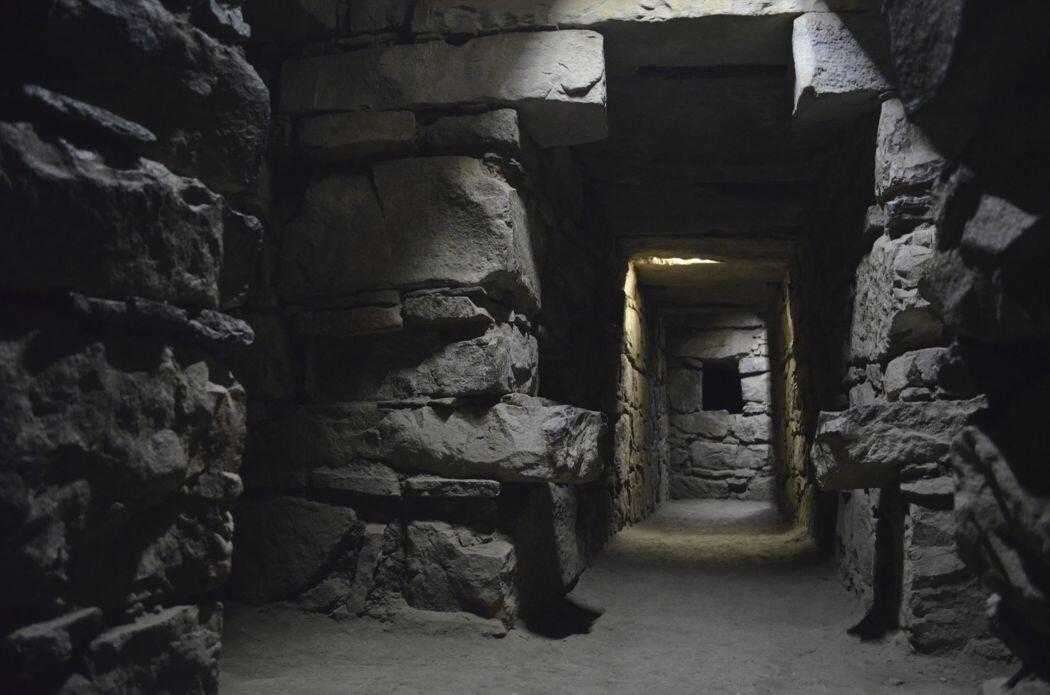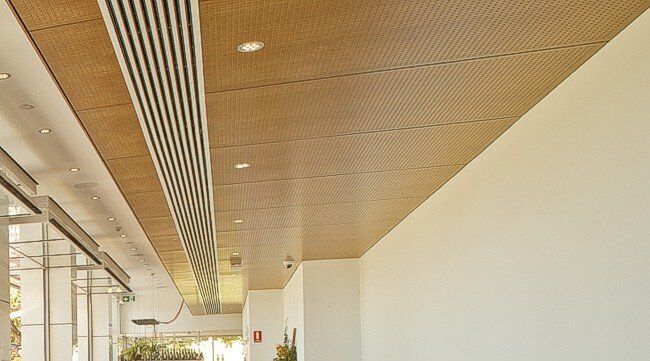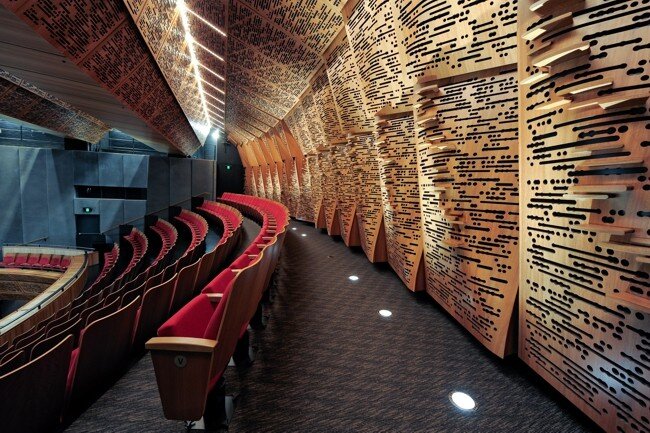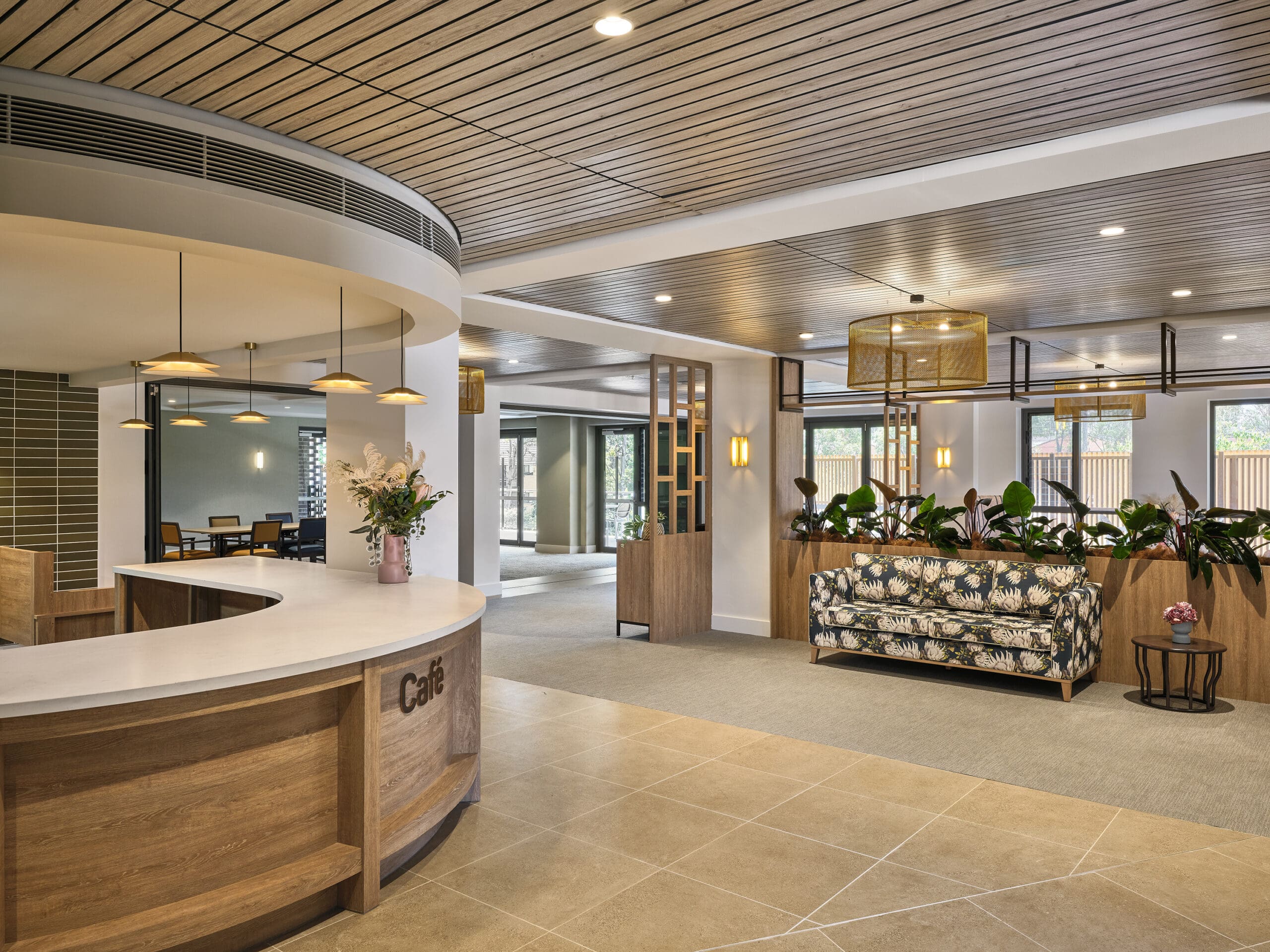In Part 4 of Architecturally Sound, we explore acoustic phenomena at Chavín de Huántar and acoustic resonance. Test your acoustic knowledge by solving my acoustics problem.
Case Study: Chavín de Huántar
Situated in the Peruvian Andes, beholds an acoustical marvel within a 3000 year old underground stone maze. It is over a kilometre long and consists of a series of at least 30 corridors. The maze exploits a confluence of optical and auditory effects, provoking an experience that appears as magical or otherworldly.
The only lighting in a mostly dark atmosphere comes from the ventilation shafts that travel from above ground. The solid stone surfaces and narrow dimensions create acoustic phenomena that consist of echoes, short reverb times and strong modal resonances [low frequencies].

EXPLORE 3 DESIGN CONCEPTS TO
Help bring your project vision to life!
The cave itself was likely meant to demonstrate the amazing power of the gods! Contemporary researchers have suggested that high priests would use the features of the temple, along with the use of hallucinogens, in an effort to terrify and manipulate the inhabitants into followers [1].
Acoustics researcher Jonathan Abel states, "I was exposed to this incredible culture that seemed to be able to control the senses in a way through the architecture" [2]
It was also reported that inhabitants of the cave were exposed to “serious sub harmonics” when Chavín Pututu instruments were played [2].
Interesting Fact: Sub-frequencies below 20Hz are defined as infra sound. Very low frequencies such as these have been linked to fatigue, sickness, sleep disturbance, evoking feelings of fear, depression, anxiety and even ghost sightings!
What is Acoustic Resonance?
It is the result of the combination of the original sound along with the reflections of sound at a systems natural frequency of vibration. An example of this is pushing a person on a swing. As the swing builds momentum, it requires less force to move the swing. The natural frequency of oscillation here is the resonant frequency.
Another example would be a wine glass breaking from sound. This can happen when you produce a sound wave (over 100dB) at the resonant frequency of the wine glass. You can find the resonant frequency by tapping the glass. The momentum attained through exciting this frequency will eventually cause the glass to shatter!
Rooms and objects will have resonant frequencies. Even our eyeballs have resonant frequencies, which is linked to the fear and ghost sightings associated with infra sound. Resonance is also occurring in our ear canals, where it is able to increase sound pressure at certain frequencies (speech frequencies).

Resonant absorbers
Resonance is also the principle behind the primary design of timber acoustic panels. The resonant frequency of flat, unperforated panels can be calculated by using the surface density of the panel and the depth of the airspace. This is how low frequency absorbers or ‘bass traps’ can be custom designed.
When perforations are added to the panel, addition parameters are factored into the performance. Open area percentage, perforation diameter and perforation centres are now considered. It is a common misconception that ‘open area’ is how we evaluate the performance of a panel resonator, when in fact, all parameters play a part, and changing just one parameter will alter the performance of a panel absorber.

In everyday architecture
The unpleasantness of low frequency sound can also be caused by a large number of external noise sources including mechanical ventilation, aircraft and road traffic noise. This occurrence can cause general annoyance and negative health and performance effects.
Problem and what's the solution?
I once worked on a job for a retirement home where there was a noise complaint from bus sounds disturbing one of the occupants in their bedroom. The noise from the morning buses would wake them up. They were insisting on reinforcing the façade to increase mass, however, did not have the budget to do so. I conducted acoustic testing within the space and discovered something very interesting!
What do you think was the cause of annoyance? What was the simplest and most cost-effective solution? Hint: it has to do with low frequencies. Answer coming in Architecturally Sound Part 5.

Did you miss these?
Part 1 - Why Acoustics Matter In Great Architecture? Go here to read it now>>>
Part 2 - How Flutter Echo Impacts a Space. Go here to read it now>>>
Part 3 - Chirped Echoes and Colouration. Go here to read it now>>>
References
[1] Rick, John (2005). "The Evolution of Authority and Power at Chavin de Huantar, Peru". Archeological Papers of the American Anthropological Association. 14: 71–89.
[2] Lumbreras, L. G. (1989). "Chavín de Huántar en el nacimiento de la civilización andina". Lima, Instituto Andino de Estudios Arqueológicos.
Ancient shells meet high-tech: Researchers study the sound of pre-Incan conches (w/ Video).
Disclaimer: All the information on this website - www.supawood.com.au - is published in good faith and for general information purpose only. Supawood does not make any warranties about the completeness, reliability, and accuracy of this information. Any action you take upon the information you find on this website (Supawood), is strictly at your own risk. Supawood will not be liable for any losses and/or damages in connection with the use of our website.
From our website, you can visit other websites by following hyperlinks to such external sites. While we strive to provide only quality links to useful and ethical websites, we have no control over the content and nature of these sites. These links to other websites do not imply a recommendation for all the content found on these sites. Site owners and content may change without notice and may occur before we have the opportunity to remove a link that may have failed.
Consent: By using our website, you hereby consent to our disclaimer and agree to its terms.





